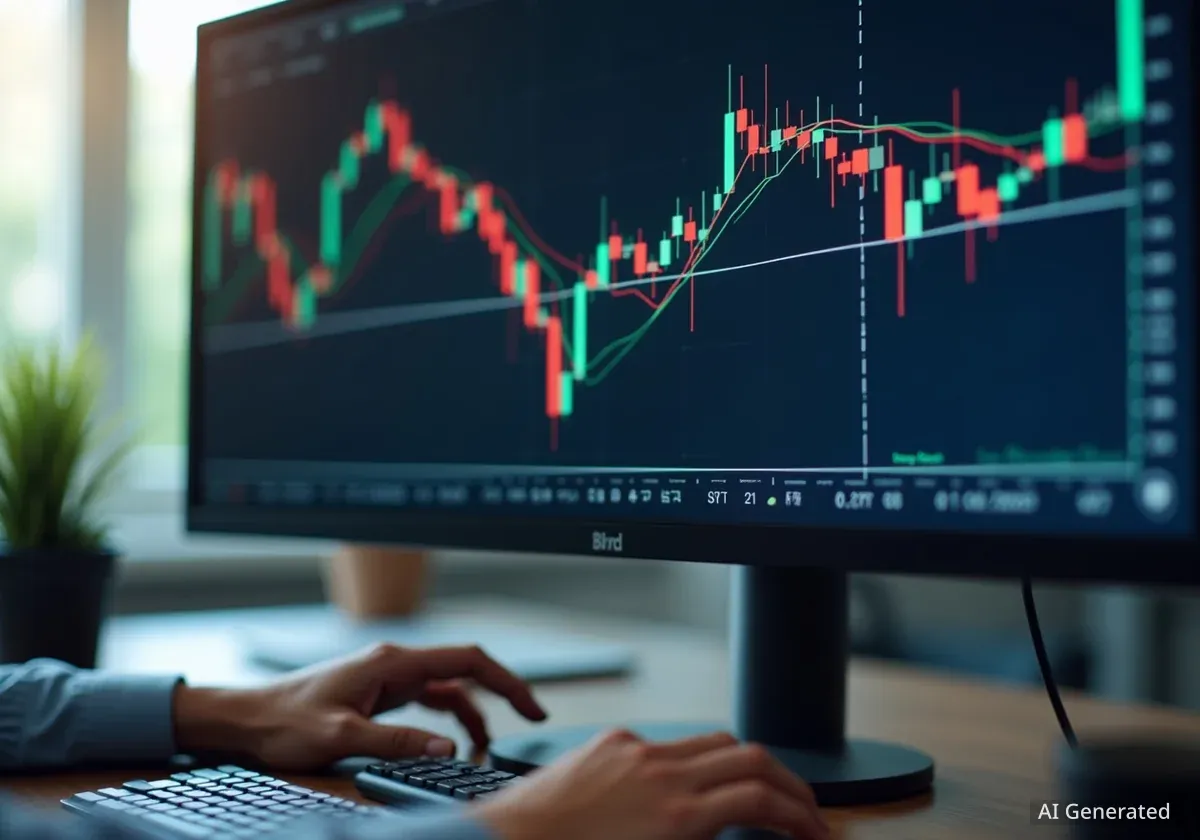The foreign exchange market is the largest and most liquid financial market in the world, with trillions of dollars traded daily. For traders aiming to navigate its complexities, a solid analytical framework is essential. Success often depends on understanding and applying two primary methods of analysis: fundamental and technical.
While some traders prefer one approach over the other, many find that a combined strategy provides a more comprehensive view of market dynamics. This guide explores both methodologies, explaining how they work and how they can be integrated to make more informed trading decisions.
Key Takeaways
- Foreign exchange (Forex) trading relies on two main analytical approaches: fundamental and technical analysis.
- Fundamental analysis examines economic data, central bank policies, and geopolitical events to determine a currency's intrinsic value.
- Technical analysis uses historical price charts and indicators to identify patterns, trends, and potential future price movements.
- Combining both methods can provide a more robust trading strategy, using fundamentals to identify long-term direction and technicals for precise entry and exit points.
- Regardless of the analytical approach, disciplined risk management is crucial for long-term success in the volatile Forex market.
Understanding Fundamental Analysis in Forex
Fundamental analysis is the study of the economic, social, and political forces that drive currency supply and demand. Traders using this method look at the overall health of a country's economy to forecast the future value of its currency. The goal is to determine if a currency is overvalued or undervalued based on its underlying economic conditions.
This approach answers the question of why a market is moving. For example, if a country's economy is growing robustly, its central bank may raise interest rates to control inflation, making its currency more attractive to foreign investors and causing its value to rise.
Key Economic Indicators to Watch
Several key data releases provide insight into a nation's economic performance. Traders monitor these indicators closely as they can cause significant market volatility.
- Gross Domestic Product (GDP): This is the broadest measure of a country's economic activity. A strong GDP report typically signals economic growth, which is positive for the currency.
- Consumer Price Index (CPI): CPI measures inflation by tracking the average change in prices paid by consumers for a basket of goods and services. High inflation often leads central banks to raise interest rates, which can strengthen a currency.
- Employment Data: Reports like the U.S. Non-Farm Payrolls (NFP) are critical. Strong job growth indicates a healthy economy, supporting the currency's value.
- Retail Sales: This report tracks consumer spending, which accounts for a large portion of economic activity. Rising retail sales are a sign of a strong economy.
Context: The Impact of a Central Bank Decision
When a central bank like the U.S. Federal Reserve raises its benchmark interest rate, it makes holding the U.S. dollar more profitable for investors seeking higher returns. This increased demand for the dollar often leads to its appreciation against other currencies, such as the euro (EUR) or the Japanese yen (JPY).
Central Bank Policies and Influence
Central banks are arguably the most influential players in the Forex market. Their monetary policy decisions, particularly regarding interest rates, have a direct and powerful impact on currency valuations.
Key actions include setting interest rates, implementing quantitative easing (QE) or quantitative tightening (QT), and providing forward guidance on future policy. Statements from central bank governors, such as the heads of the Federal Reserve or the European Central Bank (ECB), are scrutinized by traders for clues about future policy direction.
"The market's reaction to central bank announcements can be immediate and substantial. Traders must not only understand the decision itself but also the tone and language used in the accompanying statements."
The Role of Technical Analysis
While fundamental analysis focuses on the 'why,' technical analysis focuses on the 'what' and 'when.' It is the study of historical price movements and patterns on charts to predict future market behavior. Technical analysts believe that all known fundamental information is already reflected in the current price of a currency pair.
This methodology uses various tools and indicators to identify trends, support and resistance levels, and potential entry and exit points for trades.
Identifying Trends and Patterns
One of the core principles of technical analysis is that prices move in trends. Traders use several tools to identify and follow these trends.
- Moving Averages: These are smoothed-out price lines that help identify the direction of a trend. A common strategy involves watching for crossovers between a short-term moving average (e.g., 50-day) and a long-term one (e.g., 200-day).
- Trend Lines: By drawing lines connecting a series of highs or lows on a chart, traders can visualize a trend and anticipate potential price bounces or breaks.
- Chart Patterns: Formations like head and shoulders, double tops, and triangles can signal potential trend reversals or continuations.
Did You Know?
The concept of support and resistance is a fundamental part of technical analysis. Support is a price level where a downtrend is expected to pause due to a concentration of demand. Resistance is the opposite, a level where an uptrend may pause due to a concentration of selling.
Using Technical Indicators for Confirmation
Technical indicators are mathematical calculations based on price, volume, or open interest. They are used to confirm trends and provide trading signals.
- Relative Strength Index (RSI): This momentum oscillator measures the speed and change of price movements. An RSI reading above 70 suggests an asset is 'overbought,' while a reading below 30 suggests it is 'oversold.'
- Moving Average Convergence Divergence (MACD): This trend-following momentum indicator shows the relationship between two moving averages of a security’s price. Crossovers of the MACD line and its signal line can indicate potential buy or sell opportunities.
- Bollinger Bands: These bands consist of a middle band (a simple moving average) and two outer bands. They provide a relative definition of high and low prices and can help identify periods of high or low volatility.
Creating a Hybrid Strategy: The Best of Both Worlds
Relying on a single method of analysis can leave a trader vulnerable to blind spots. A fundamental trader might correctly predict a currency's long-term direction but suffer losses from poor timing. A technical trader might profit from short-term patterns but be caught off guard by a surprise economic data release.
A hybrid approach seeks to mitigate these risks by combining the strengths of both disciplines. Traders can use fundamental analysis to establish a long-term directional bias and then use technical analysis to identify precise entry and exit points for their trades.
A Practical Example: Trading the EUR/USD
Imagine the European Central Bank signals it will likely raise interest rates in the coming months due to persistent inflation (a fundamental factor). A trader might form a bullish bias on the euro, expecting it to strengthen against the U.S. dollar.
Instead of buying immediately, the trader could turn to technical analysis. They might wait for the EUR/USD price to pull back to a key support level or for a bullish crossover on the MACD indicator. This technical signal would serve as the trigger to enter the trade, improving the timing and potential risk-reward ratio.
This integrated approach allows the trader to align their position with the broader economic trend while using chart-based signals to optimize their execution. By understanding both the 'why' and the 'when,' traders can build a more resilient and comprehensive strategy for navigating the dynamic Forex market.





